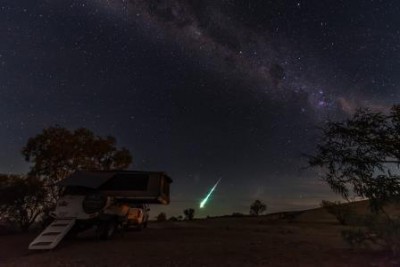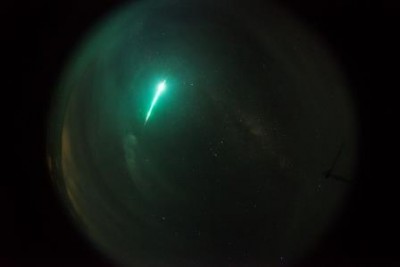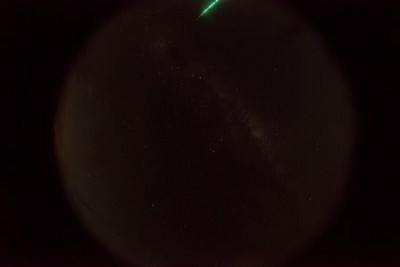Oodnadatta Fireball – Fireballs in the Sky

Did we mention how much we love fireballs? This image of an Oodnadatta Fireball was taken by Peter Jerie, amateur astrophotographer on 1 April 2015. We came across it on the blog Lunar Meteorite Hunters a few days later, checked our own Desert Fireball Network cameras, and yes! We got some pictures of it too!


We’re still working out whether we captured it on any more cameras, and whether there might be a meteorite form it, but in the meantime, we got in contact with Peter to find out more about it.
Peter, that was a wicked shot, how did you capture it?
I took the photo of the meteorite on the night (or rather early morning) of 1st of April at 4:31 local time. I was travelling from the Flinders Ranges to the Red Centre and I always prefer camping in the bush as it gives the best opportunity for night sky pictures. Algebuckina bridge on the Oodnadatta Track is a great place to visit and to camp.
I was doing time-lapse video of the Milky Way that night, taking a photo every 30 seconds. I started my camera running around midnight and I went to sleep and set my alarm clock to about 4 am, because I knew the moonset would happen around that time. With time-lapse photography one needs to adjust the exposure when the light conditions change during the session, so I got up and and stayed with my camera while continuously adjusting my camera settings as it was getting darker and darker with the moonset. This was when I captured the meteorite. I was busy checking settings on my camera so I could only see it in my peripheral vision as bright flash of light, but the camera captured the event perfectly!
So you’re an astrophotographer?
I’m not really into astronomy but the night skies in the outback fascinate me, it’s almost surreal and when you live in the city it’s easy to forget what the sky is supposed to look like without the light pollution. When I was crossing the Simpson Desert last year I took few night photos and while I liked them, they didn’t reflect exactly what I was seeing. Shortly I found my new hobby – astrophotography, I upgraded my photography equipment, learnt few things and now my photos of night skies are more realistic.
In the process I’ve learnt few things about astronomy and astrophotography.
What have you found to be the most difficult part of doing astrophotography in the outback?
I enjoy this because it’s a challenge – to travel to your remote location, check the weather forecast for the night, stay few nights or return later when it’s too cloudy on the day, know exactly where and when Moon, Sun, Milky Way,…. will set or rise, what light pollution to expect at different phases of Moon, how to position yourself with the object/landmark you want to capture, …
Not to mention the preparation and risks of travelling in remote Australia! Have you always been an outback traveler?
I like to travel around the Australian outback, I prefer to travel solo and always enjoy the peaceful and quiet remote areas, sometimes I don’t see any people over many days. It’s always good to get away from the busy stressful city life, this is my way to refresh my mind and re-energize. I do it every year, last year I spent 2 months on the road and traveled 20,000 km.
That’s incredible! And what’s on for this year?
On my current trip I’m doing time-lapse photography whenever the conditions and the scene are good. My aim is to visit many Australian landscape landmarks and do a time-lapse session when conditions allow. Within a 12-month period I would like to create final time-lapse video of what I captured on the road. Since the meteorite event a month ago I have already visited and captured at night Chambers Pillar, Rainbow Valley, Uluru, Devils Marbles, Mt Connor, …
Well, let us know if you see any more fireballs!
Thanks for the chat Peter, happy travelling!
Check out Peter’s breathtaking time lapse video of nightscapes in Australia on Vimeo.